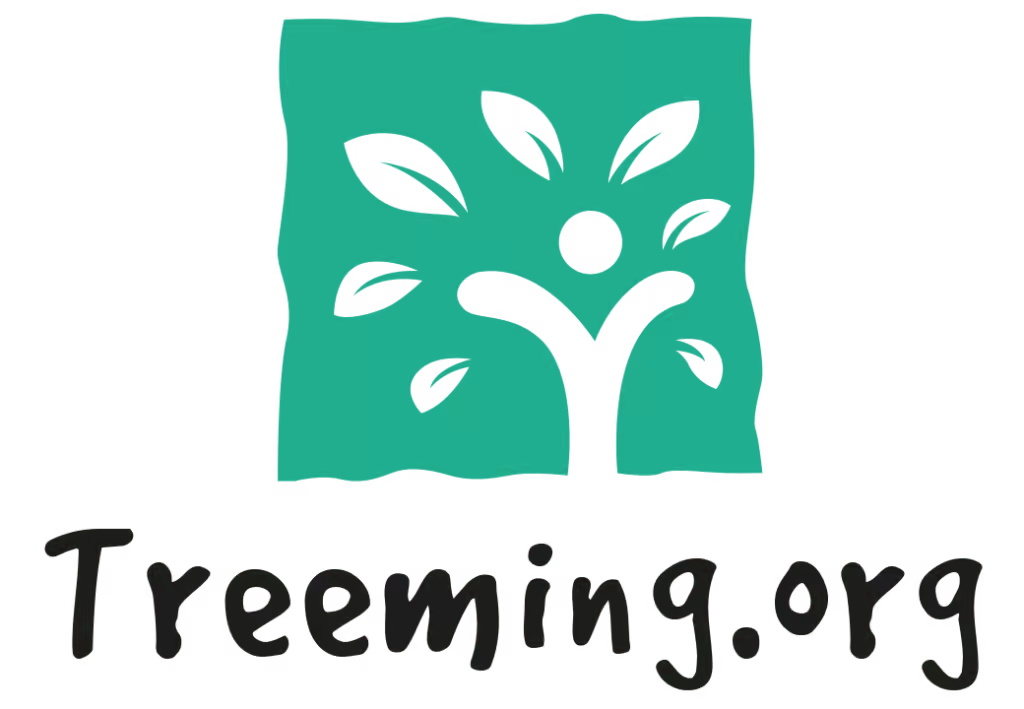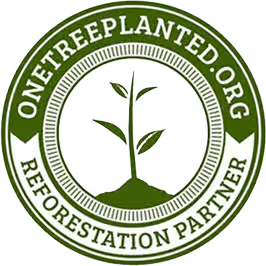In the heart of every forest lies a complex, hidden language spoken by the trees themselves. Recent scientific discoveries have revealed that trees are not solitary beings but part of an intricate social network. This article delves into the fascinating ways trees communicate, support each other, and adapt to their ever-changing environment.
Key Takeaways
- Trees communicate through a variety of methods, including chemical signals, electrical impulses, and underground fungal networks.
- Forests operate as social networks where trees share nutrients, warn each other of dangers, and support their neighbors.
- Climate change and human activities have significant impacts on the communication and resilience of tree networks.
- Scientific research is increasingly uncovering the emotional and sensory capacities of trees, challenging our traditional understanding of plant life.
- Connecting with nature and understanding the hidden language of trees can enhance our appreciation of forests and their vital role in our ecosystem.
Whispers in the Canopy
The Sound of Leaves
Clicks and chatter disturb the cathedral hush. The air is so twilight-green she feels like she’s underwater. It rains particles, spore clouds, broken webs and mammal dander, skeletonized mites, bits of insect frass and bird feather. Everything climbs over everything else, fighting for scraps of light. If she holds still too long, vines will overrun her. She walks in silence, crunching 10,000 invertebrates with every step, watching for tracks in a place where at least one of the native languages uses the.
Wind as a Messenger
Suzanne Simard (in a Vancouver forest) uses scientific tools to reveal a hidden reality of trees communicating with their kin. Diàna Markosian
Birdsong and Tree Communication
Richard Powers (28:50):
The prodigious forest pulls her along, past the trunk of an immense western red cedar. She addresses the cedar, using words of the forest’s first humans. "Long Life Maker. I’m here. Down here." She feels foolish, at first, but each word is a little easier than the next.
Richard Powers (29:16):
Roots of Connection
Underground Fungal Networks
Beneath your feet lies a hidden world where trees communicate through underground fungal networks. These networks, often referred to as the “wood wide web,” connect trees via fungal filaments that join with the hairlike root tips of trees. This intricate system allows trees to share information and resources, creating a living network that supports the entire forest ecosystem.
Nutrient Sharing Among Trees
In this underground network, trees are not just passive recipients but active participants. They share nutrients with each other, ensuring that even the youngest seedlings have a chance to thrive. This nutrient sharing is especially crucial in times of stress, such as drought or disease, where the more connected trees can support those in need.
The Role of Mycorrhizal Fungi
Mycorrhizal fungi play a vital role in this underground communication system. These fungi form symbiotic relationships with tree roots, enhancing the trees’ ability to absorb water and nutrients. In return, the trees provide the fungi with essential sugars produced through photosynthesis. This mutualistic relationship is a cornerstone of forest health, demonstrating the profound interconnectedness of forest life.
When you walk through a forest, remember that beneath the surface lies a complex, interconnected world that sustains the trees and the entire ecosystem. The more you understand this hidden network, the more you can appreciate the dynamic ecosystem of trees.
Silent Sentinels

When you walk through a forest, you might think of trees as silent sentinels standing guard. But these towering giants are far from silent. They communicate in ways that are both subtle and profound, ensuring the survival and health of the entire forest ecosystem.
The Social Forest

In the heart of the forest, trees form intricate family bonds. Tree parents live together with their children, communicating and supporting them as they grow. This nurturing environment ensures the survival and health of the forest community.
Forests are not just a collection of individual trees; they are a cohesive unit. Trees share nutrients and resources through underground networks, ensuring that even the weakest members receive support. This mutual aid system is vital for the resilience of the forest.
Ancient woodlands hold the wisdom of centuries. They teach us about the importance of cooperation and support within the forest. By observing these ancient trees, we learn valuable lessons about resilience, community, and the profound connections that sustain life in the forest.
When you walk among these giants, you are not just witnessing nature; you are experiencing a living, breathing community. Forest Bathing in such environments can be a deeply healing and transformative experience.
Adapting to Change

Climate Change and Tree Communication
As the climate shifts, trees are forced to adapt to new environmental conditions. Their ability to communicate becomes crucial for survival. Trees use a variety of signals to warn each other about changes in temperature, moisture levels, and other climatic factors. This communication helps them to adjust their growth patterns and optimize resource use.
Resilience in Forest Ecosystems
Forests are incredibly resilient ecosystems. They have developed intricate support systems that allow them to withstand and recover from environmental stressors. These systems include nutrient sharing, mutual support through root networks, and even the ability to alter their own microclimates. The resilience of forests is a testament to the power of collective strength and cooperation.
Human Impact on Tree Networks
Human activities, such as deforestation and urbanization, have a profound impact on tree communication networks. The disruption of these networks can lead to weakened forest ecosystems and reduced resilience. It is essential to recognize the importance of preserving these networks to maintain the health and stability of our forests.
The hidden language of trees is a reminder of the interconnectedness of all life. By understanding and protecting these communication networks, we can help ensure the survival of our forests in the face of change.
The Emotional Life of Trees

Do Trees Feel Pain?
When you walk through a forest, have you ever wondered if the trees around you can feel pain? The idea might seem far-fetched, but recent studies suggest that trees have complex responses to injury. They release chemical signals, much like a cry for help, to warn neighboring trees of potential threats. This intricate system of communication is a testament to the hidden depths of tree life.
Memory and Learning in Trees
Trees are not just passive giants; they have the ability to remember and learn from their experiences. For instance, trees can adapt to changing environmental conditions by altering their growth patterns. This form of memory helps them survive in a constantly changing world. Imagine a tree that has faced a harsh winter; it will remember this and adjust its future growth to better withstand similar conditions.
The Science of Tree Emotions
The concept of tree emotions might sound like something out of a fairy tale, but there’s a growing body of scientific evidence to support it. Trees respond to their environment in ways that are strikingly similar to how animals react. They can experience stress, form bonds with other trees, and even exhibit behaviors that resemble nurturing. This emotional complexity makes you realize that forests are not just collections of trees, but superorganisms with intricate social networks.
Embrace the forest’s language, decode tree communication, and become a steward of nature’s whispers.

Walking Among Giants
A New Perspective on Forest Walks
When you step into a forest, you are entering a world that is vibrantly alive and charged with wonder. The trees around you are not just passive giants; they are communicating with one another, involved in tremendous struggles and death-defying dramas. Each step you take is a journey through a complex web of relationships, alliances, and kinship networks that have allowed these trees to reach their enormous heights.
Connecting with Nature
Walking among these giants, you may feel a strange, unmoored sensation, as if you have entered a fairy tale. This feeling is your connection to nature deepening, your senses awakening to the subtle communications happening all around you. The rustle of leaves, the creak of branches, and the whisper of the wind are all part of a hidden language that you are beginning to understand.
The Healing Power of Trees
The forest is not just a place of beauty; it is a sanctuary for the soul. Studies have shown that spending time among trees can reduce stress, lower blood pressure, and improve overall well-being. As you walk, take a moment to breathe deeply and let the forest’s healing power wash over you. Feel the strength and resilience of the trees, and let it inspire you to face your own challenges with renewed vigor.
In the embrace of the forest, you are never alone. The trees stand as silent sentinels, offering their wisdom and strength to all who seek it.
Walking among giants, you can experience the transformative power of nature like never before. Our comprehensive forest bathing program offers you the chance to reconnect with the environment, reduce stress, and enhance your well-being. Don’t miss out on this opportunity to rejuvenate your mind and body. Join us now and unlock the secrets of forest bathing!
Conclusion
In the heart of every forest lies a hidden world of communication and connection that defies our traditional understanding of nature. Trees, often perceived as solitary and silent, reveal themselves to be intricate social beings, sharing resources, warning each other of dangers, and supporting one another through complex underground networks. This newfound understanding, championed by pioneers like Peter Wohlleben and Suzanne Simard, transforms our perception of forests from mere collections of trees to vibrant, interconnected communities. As we continue to uncover the mysteries of this ‘wood-wide web,’ we are reminded of the profound intelligence and resilience of nature. The secret language of trees not only deepens our appreciation for the natural world but also underscores the importance of preserving these majestic ecosystems for future generations. Walking through a forest will never be the same again, as we now know that every rustle of leaves and every whisper of the wind carries a message in the hidden language of trees.
Frequently Asked Questions
How do trees communicate with each other?
Trees communicate through underground fungal networks, also known as the ‘wood-wide web.’ They share water and nutrients and send distress signals about drought, disease, or insect attacks.
Do trees feel pain?
While trees do not have nervous systems like animals, they can still experience something analogous to pain. For example, when a tree is cut, it sends electrical signals similar to wounded human tissue.
What role do mycorrhizal fungi play in tree communication?
Mycorrhizal fungi form mutualistic relationships with trees, connecting them through a vast underground network. This network allows trees to share resources and communicate with each other.
How does climate change affect tree communication?
Rapid climate changes force trees to adapt to new environmental conditions. Understanding tree communication can help us learn how forests respond to these changes and how we can support their resilience.
Can trees remember and learn?
There is evidence to suggest that trees have memory and learning capabilities. They can remember past stress events and adjust their responses to future challenges accordingly.
What is the ‘wood-wide web’?
The ‘wood-wide web’ refers to the underground network of fungal connections that link trees together. This network facilitates communication, nutrient sharing, and mutual support among trees.





